Last updated on June 5th, 2023
- What Does Trout Taste Like: Unraveling the Flavor Mysteries - August 2, 2023
- Best Fishing Bibs Tested & Reviewed: Buyer’s Guide - July 19, 2023
- Fishing for Whiskers: Best Bait for Catfish - July 12, 2023
For any angler looking to get into bass fishing, the basics can seem overwhelming. Where do you start? What tackle and gear should you use? How do you even find them in the first place? And what techniques are best for catching those elusive fish? Don’t worry; we have all of your answers right here. Our comprehensive guide on bass fishing tips for beginners will help equip any novice with all they need to know about finding and landing that perfect catch. From understanding where and when to look for them, through essential equipment like lures or spinners, as well as various techniques such as working bottom edges – it’s all covered in this article. So let’s dive in deep and explore these key points together – because if anyone can teach a beginner how to make their very first successful cast out there – it’s us.
Table of Contents:
- Where to Find Bass
- Best Times to Catch Them
- Techniques for Catching Bass
- Bass Fishing Tackle
- Essential Bass Lures
- Conclusion
- FAQs
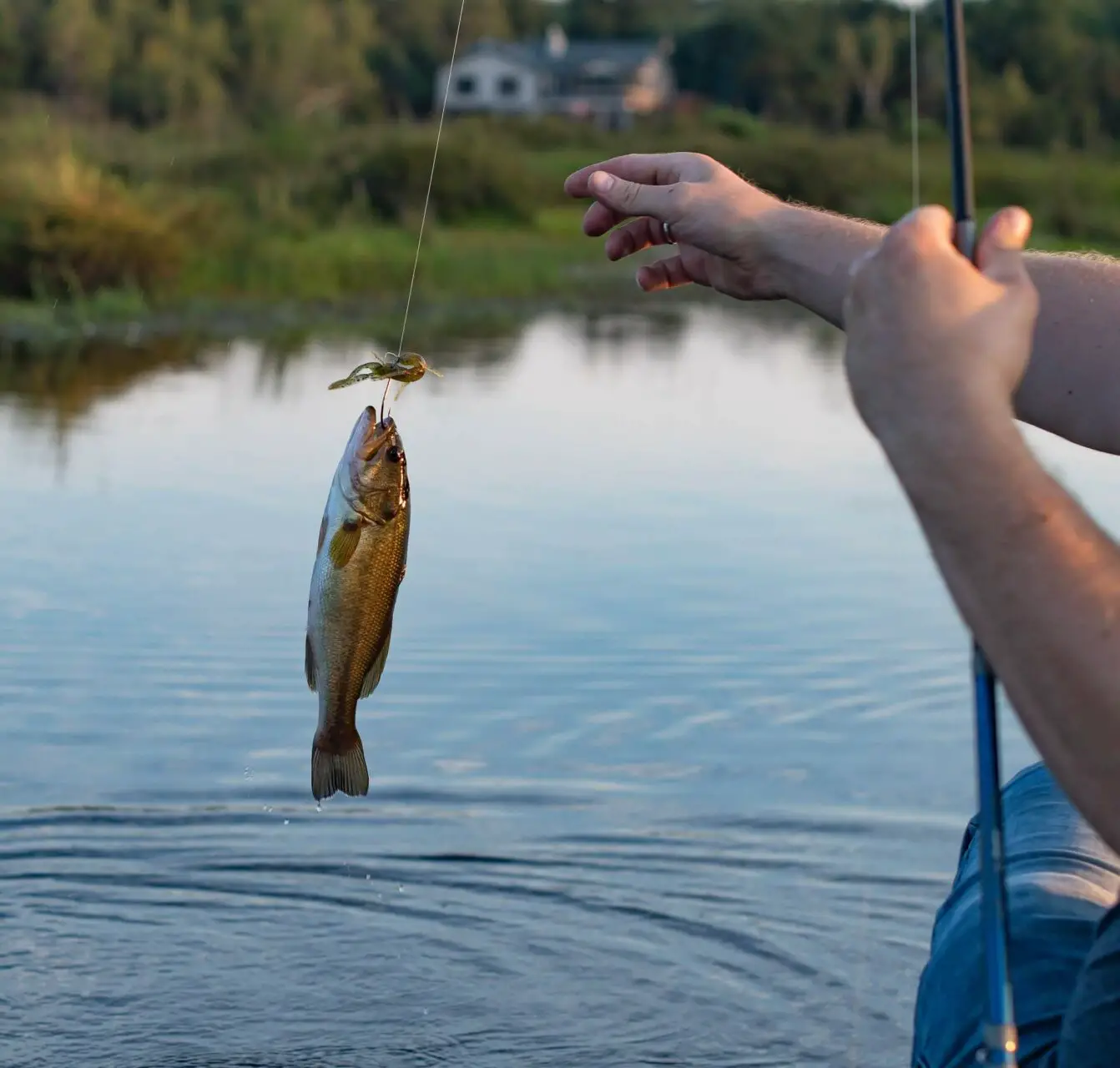

Where to Find Bass
Rivers and Streams:
Rivers and streams are great places to find bass. Bass love the moving water, which provides them with plenty of food sources like insects, minnows, crayfish, frogs, and more. Look for deeper pools or eddies where bass can hide from the current. Also look for structure such as logs or rocks that provide shelter for the fish.
Lakes and Ponds:
Lakes and ponds offer a variety of habitats that attract different types of bass. Areas near shorelines with vegetation are ideal spots to start looking since they provide cover from predators as well as food sources like small fish or insects. Deeper areas in lakes often have submerged structures like sunken trees or brush piles that hold large numbers of bass during certain times of year.
Reservoirs and Bays:
Reservoirs often contain large populations of both largemouth and smallmouth bass due to their abundance of structure such as points, humps, ledges, drop-offs etc., all providing cover for the fish while also attracting baitfish which attracts larger predator species like bass. Bays on reservoirs tend to be shallow but still hold good concentrations of both species throughout most seasons depending on weather conditions at any given time period.
Rivers and Streams:
Rivers and streams are great places to find bass. Bass love the cooler water temperatures found in these bodies of water, so they tend to congregate around areas with deeper pools or faster-moving currents. Look for eddies, deep holes, fallen trees, rocks and other structures that can provide cover for the fish. When fishing rivers and streams, it’s important to use lures that imitate baitfish like minnows or crayfish.
Lakes and Ponds:
Lakes and ponds offer a variety of habitats where this species can be found throughout the year. During springtime spawning season, look for shallow flats near shorelines where males will build nests in order to attract females looking to lay eggs. In summer months when water temperatures rise above 70 degrees Fahrenheit (21°C), head out into deeper waters where the fish may be hiding from the heat. Use lures such as crankbaits or jigs that mimic baitfish activity on top of the lake bed or suspended off bottom structure like weeds beds or sunken logs/trees/brush piles.
Reservoirs are large man-made lakes created by damming up rivers or creeks, which create an ideal habitat for largemouth bass due to their abundance of food sources like shad, crawdads and insects along with plenty of cover provided by submerged vegetation and woody debris. This makes them easy targets for anglers who know how and when to target them. As far as bays go, focus your efforts on points located at the mouths of major tributaries during times when current is flowing in from upstream sources bringing fresh nutrients and oxygenated waters full of baitfish, which attract hungry predators.
Once you have identified the ideal locations for bass fishing, it’s time to focus on when and how to catch them. The next section will provide tips for the best times to fish for bass and advice on night fishing techniques.
Key Takeaway: When bass fishing, look for deeper pools or eddies in rivers and streams, vegetation near shorelines in lakes and ponds, and points at the mouths of tributaries in reservoirs. Use lures that imitate baitfish to attract predators like bass.
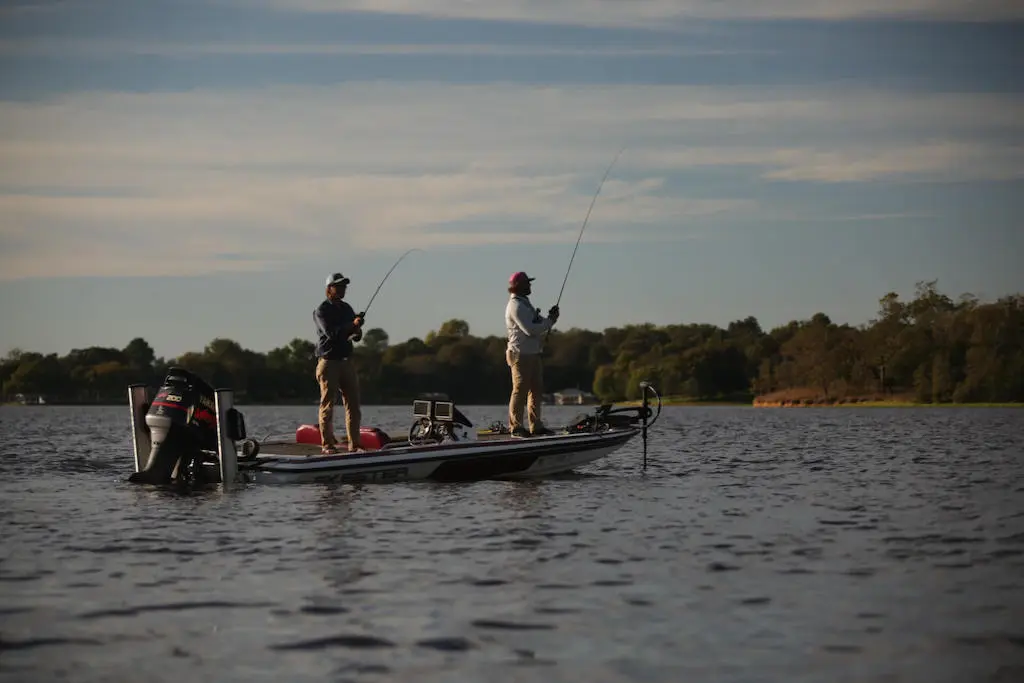

Best Times to Fish for Bass
Early Morning Hours:
Early morning is the best time to fish for bass. Bass are most active during this period and can be found in shallow waters near cover such as logs, rocks, or vegetation. The cooler temperatures of early morning also make it easier for bass to find food sources like insects and small baitfish. When fishing in the early morning hours, use lures that mimic these natural prey items such as crankbaits or spinnerbaits. It’s important to keep your casts low so you don’t scare away any nearby bass.
Late Afternoon Hours:
Late afternoon is another great time to target bass when they become more active due to increasing water temperature and decreasing light levels. During this period, try using topwater lures such as poppers or buzz baits which create a lot of surface disturbance that attracts attention from hungry bass below the surface. You may also want to switch up your presentation by using slower-moving baits like worms or jigs which will give you a better chance at catching those late-day lunkers.
Nighttime offers anglers an opportunity to catch some big ones since many species of fish become more active under darkness than during daylight hours. When night fishing for bass, focus on areas with plenty of structure where they can hide out until feeding time rolls around again after dark. Use darker colored lures that stand out against the night sky and move them slowly through the water column so you don’t spook any potential catches. Additionally, make sure you have enough light source so you can see what’s going on around your boat while keeping noise levels down; no one wants their line getting tangled up in someone else’s gear.
Early morning and late afternoon hours are the best times to fish for bass, but don’t forget that night fishing can be just as rewarding. To maximize your success, it’s important to understand different techniques for catching bass such as working the bottom & edges of structure & cover, jigging & crankbaiting tactics, and using soft baits.
Key Takeaway: Bass fishing can be successful at different times of the day. Early morning is best for shallow water near cover and lures that mimic natural prey; late afternoon calls for topwater lures; nighttime requires dark colored lures, structure, and light sources.
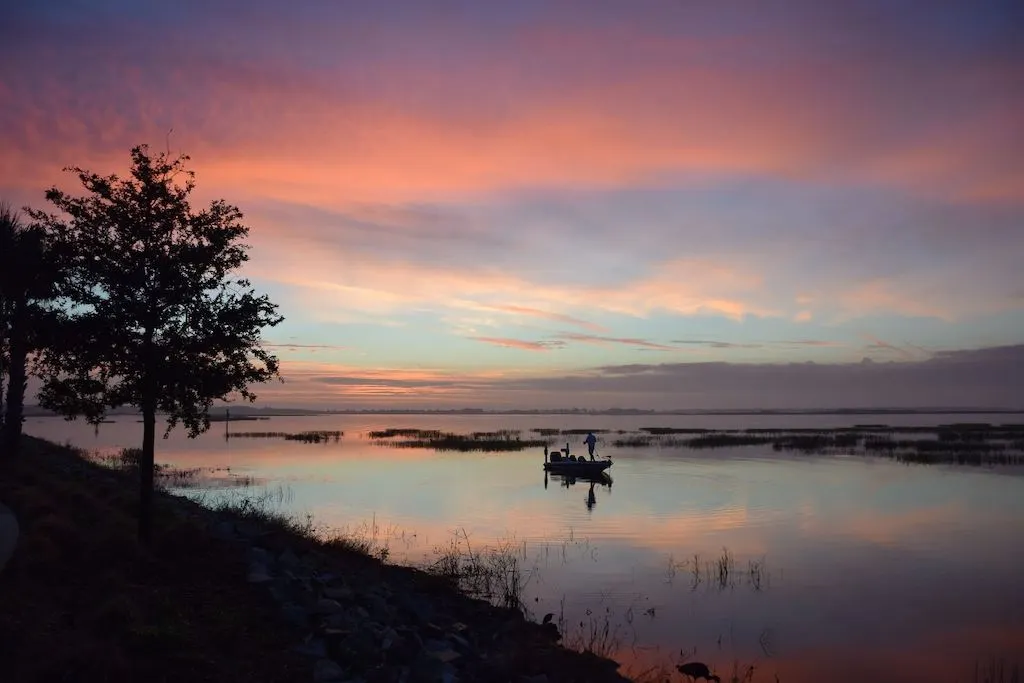

Bass Fishing Tackle
When it comes to bass fishing, the right tackle is essential. The two main types of rods and reels used for bass fishing are baitcasting and spinning.
Baitcasting rods are designed with a trigger-style grip, allowing anglers to make more accurate casts. They also feature a line guide that helps keep the line in place while casting.
Spinning rods have an open-faced reel design which makes them easier to use than baitcasting models but they don’t provide as much accuracy when casting.
The type of rod you choose should depend on your style of fishing and what kind of fish you plan on catching.
For example, if you’re targeting larger fish like largemouth or smallmouth bass then a heavier action baitcasting rod would be best suited for this type of situation since it will give you more control over your lure presentation and allow you to cast farther distances with greater accuracy.
If you’re looking for smaller panfish such as bluegill or crappie then a lighter action spinning rod would be better suited since these species aren’t typically caught at long distances from shorelines or dockside locations where heavier lures might not be necessary.
In addition to selecting the right rod, choosing the proper reel is just as important when it comes to bass fishing success. Reels come in different sizes depending on how much line capacity they can hold (the amount of line needed for various techniques). Generally speaking, most anglers prefer using medium sized reels that offer plenty of power yet still remain lightweight enough so they won’t tire out their arms during long days on the water chasing after big catches!
Finally, selecting quality lines is also key when it comes to successful bass fishing trips; monofilament lines are usually preferred by many anglers due its versatility in terms of strength versus stretchability – meaning that monofilament offers good abrasion resistance while still providing some flexibility so lures can move freely through water without getting snagged up too easily!
Fluorocarbon lines are another popular choice among experienced fishermen because they sink faster than mono lines which allows them to stay close contact with bottom structure where most large gamefish tend hang out waiting for unsuspecting prey items passing by overhead!
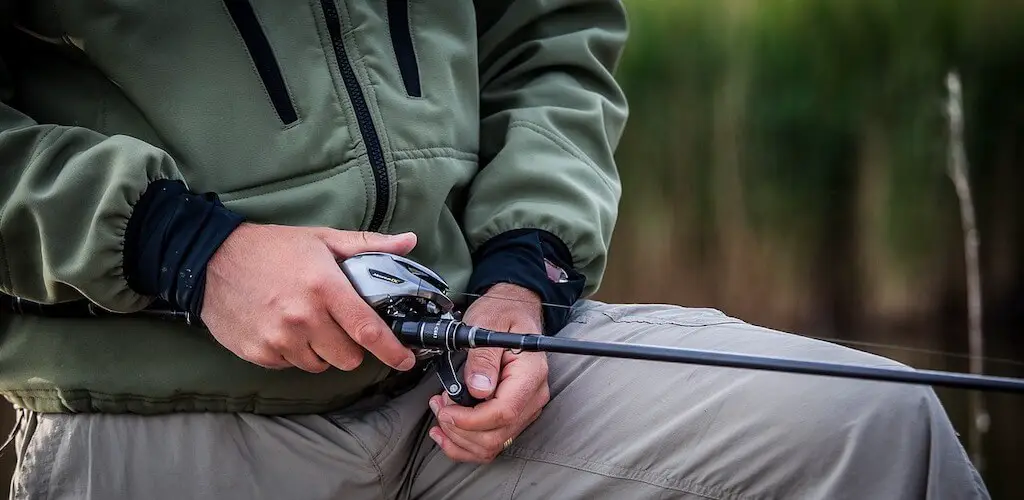

Essential Lures
When it comes to bass fishing, lures are essential for success. There is a wide variety of lures available on the market that can be used for different types of bass fishing scenarios. Here we will look at some of the most popular and effective lures for catching bass.
Crankbaits: Crankbaits are one of the most popular and versatile lure options when it comes to bass fishing. They come in many shapes, sizes, colors, and styles so you can find something suitable for any situation or water type. Crankbaits work best when retrieved with a steady retrieve along the bottom or near structure such as rocks or logs where fish like to hide out during feeding times.
Spinnerbaits: Spinnerbaits are another great option when it comes to targeting larger sized bass species such as largemouths and smallmouths. These baits feature multiple blades that spin around creating vibration in the water which attracts nearby fish looking for an easy meal. Spinnerbait setups usually include single hooks but double hook rigs can also be used depending on your preference or target species size requirements.
Soft Baits: Soft baits such as worms, grubs, crawfish imitations etc., are excellent choices when targeting smaller sized panfish species like bluegill and crappie but they can also be used effectively on larger gamefish too! When using soft baits try rigging them up with light weight jig heads so they sink slowly through deeper waters where bigger fish tend to hang out during feeding times – this technique works especially well in springtime months when baitfish start moving into shallower areas again after winter hibernation periods!
Topwater Lures: Topwater lures such as poppers, frogs and buzz baits create surface disturbance which mimics injured prey items – this makes them ideal choices if you’re looking to target aggressive top-feeding predators like largemouths who love chasing down their meals from above! Make sure you use a slow retrieve speed while working these types of lures otherwise they won’t stay close enough long enough for hungry predators below to notice them properly before they swim away again!
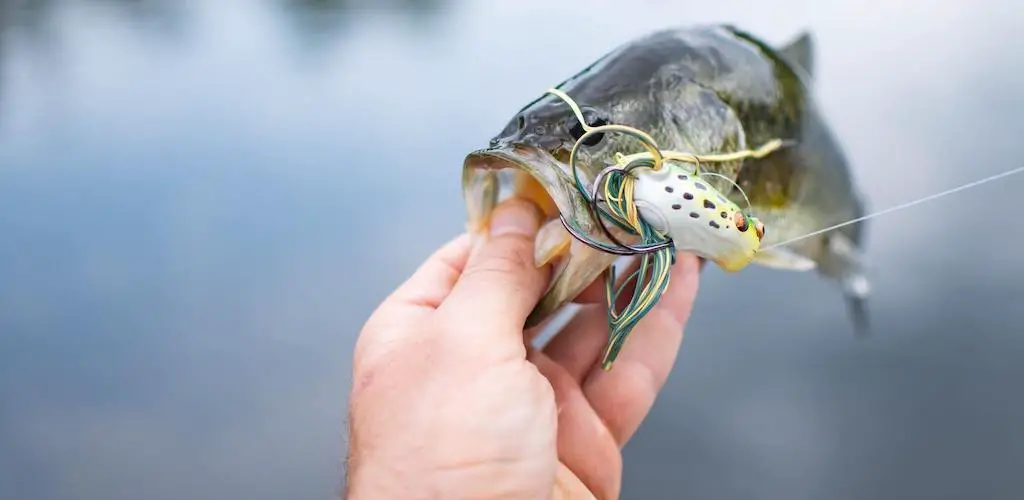

Techniques for Catching Bass
Fishing for bass can be a fun and rewarding experience, but it requires knowledge of the right techniques to ensure success. Working the bottom & edges of structure & cover is one of the most effective ways to catch bass. This technique involves using your rod and reel to cast out lures or baits near rocks, logs, stumps, weeds, docks, or other structures that provide shelter for bass. By slowly retrieving your lure along these structures you can entice them into biting.
Jigging & crankbaiting tactics are also useful when fishing for bass. Jigging involves using a jighead with soft plastic bait attached in order to create an enticing action as it falls through the water column. Crankbaiting is similar but uses hard-bodied lures instead of soft plastics which creates more vibration in the water which attracts fish from further away than jigs do alone. Both methods require practice and patience but can be very effective if done correctly.
Using soft baits such as worms or grubs can also help you catch bigger bass with ease. Soft baits offer a natural presentation that appeals to larger fish due to their scent and movement in the water column when retrieved properly. When rigging up your line with these types of baits, make sure they are rigged correctly so they do not spin on retrieval, causing unnatural movements that could spook potential catches away from your hook set ups.
Conclusion on Bass Fishing Tips for Beginners
With these bass fishing tips, you’ll be able to get out on the water with confidence and catch some big ones. From choosing the right tackle and lures to finding where bass are hiding in rivers or lakes, understanding when they’re most active, and using effective techniques like working the bottom or edges – you now have all of the information needed to become an expert angler. So grab your rod, reel in those fish stories, and enjoy a day of successful bass fishing.
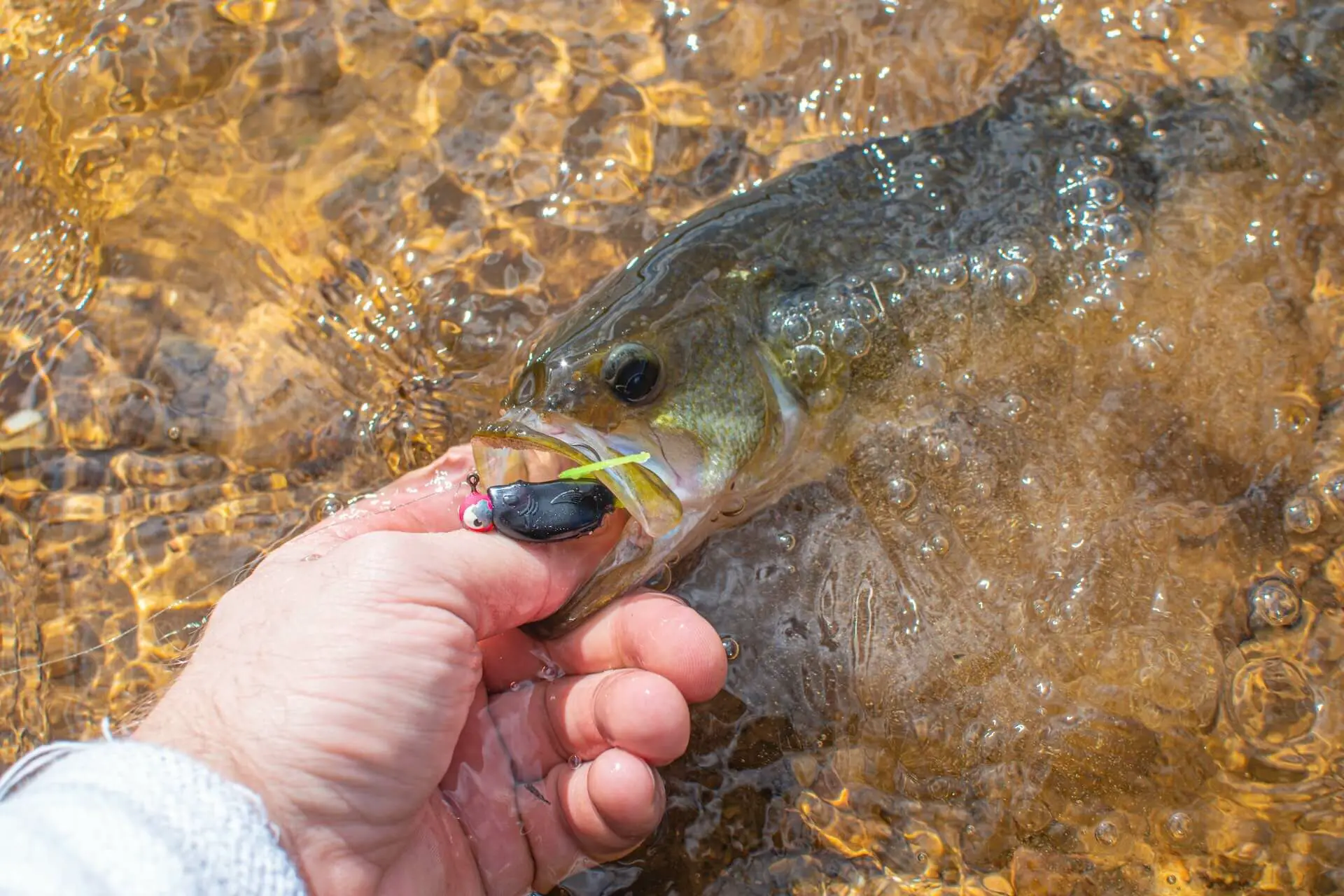

FAQs on Bass Fishing Tips and Techniques
What is the secret to bass fishing?
The secret to bass fishing is understanding the behavior of the fish and how they react to different types of lures, baits, and techniques. Knowing when and where to cast your line is also key. Bass are most active in shallow water during dawn or dusk so you should focus on these times for optimal success. Additionally, using a variety of lures that mimic natural prey will help attract more bites. Lastly, having patience while waiting for a bite can be difficult but it’s essential if you want to land some big ones.
What time of day are bass most active?
Bass are most active during the early morning and late evening hours when the sun is low in the sky. During these times, the fish will move to shallow waters near shorelines or structure to feed on baitfish. They also become more aggressive as they prepare for spawning season. Additionally, bass can be found actively feeding at night under lights around docks and other structures. All of these conditions make them easier to target with lures and techniques that match their behavior patterns.
What is the most effective bait for bass?
Bass are a species of fish that can be found in many freshwater lakes and rivers. The most effective bait for bass fishing is typically live bait such as worms, minnows, crayfish, or frogs. Artificial lures like crankbaits, spinnerbaits, and soft plastics can also be used to target bass. When using artificial lures it’s important to match the size and color of the lure with what the bass are feeding on at that time of year. Additionally, when selecting a hook size for your lure make sure it is small enough so that you don’t miss out on strikes from smaller bass but large enough so that larger ones won’t throw off your presentation.
What time of day do bass usually bite?
Bass typically bite most actively during the early morning and late evening hours, when light levels are low. During these times, bass will move into shallow water to feed on baitfish and other prey. They also tend to be more active in cloudy or overcast conditions. Bass may also feed throughout the day if there is plenty of cover available for them to hide from predators or take shelter from direct sunlight. In any case, anglers should always keep an eye out for signs of activity such as surface disturbances or visible fish movement near structure like logs, rocks, docks, weed beds etc., which can indicate a feeding pattern that could lead to success.
